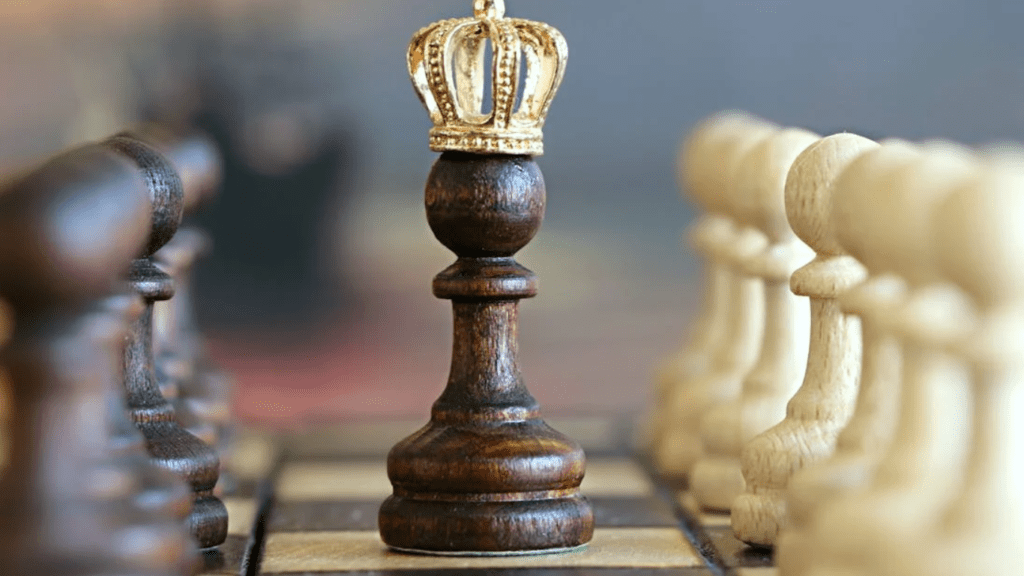
 Learning the basics will help you score more in this game if you are a total beginner or a tottering expert. Fortunately, you need not wait ages to improve; just one focused week’s effort can mean the world to your game. Good strategies faded and would become alive through surgery- the chess game executed consistently for 1 week. In this article, find out 10 tactics that every beginner must learn.
Learning the basics will help you score more in this game if you are a total beginner or a tottering expert. Fortunately, you need not wait ages to improve; just one focused week’s effort can mean the world to your game. Good strategies faded and would become alive through surgery- the chess game executed consistently for 1 week. In this article, find out 10 tactics that every beginner must learn.
1. Know the Basic Rules and Movement
Remember that you must know certain basic rules about chess before going any further with tactical maneuvering. This will include grasping how each piece moves, the objectives of the game, and the applicable special moves-castling, en passant, or pawn promotion, for instance. Knowing these simple mechanics will make the confident player’s approach to playing easier to learn advanced strategies. On Day 1, familiarize yourself with the chessboard setup, the chess pieces, and the movements of each chess piece. This will lay the foundation for developing your game strategy insight.
2. Make Sure to Control the Center of the Board
One of the basics in chess is controlling the center of the board. The center consists of the squares d4, d5, e4, and e5. It is important because it gives your pieces maximum mobility and influence as you start the second day of your learning journey and practice opening and controlling these central squares. A powerful hold on the center early in the game limits your opponents’ movement while providing your pieces with more options for cooperation. Center control ultimately makes transitions into a strong middle and an endgame.
3. Early Development is Key
The development of pieces would be the next strategy to ace. In the opening, you want to play your knights and bishops instead of letting them sit on their initial squares. They exert influence over larger board areas and prepare themselves for later attacks. It is best not to move the same piece multiple times in your opening unless compelled to; that wastes time and space. The main focal point of Day 3 will be solid development, whereby the efficient movement of as many pieces as possible is prioritized, with special emphasis placed on developing knights and bishops and controlling the center as much as possible.
4. Castle to Secure Your King’s Safety
Castle your king early in the game; it is an important defensive move. Castling secures two functions: the castle moves the king out of danger into safety and develops one of your rooks. Early castling makes all your efforts to save a vulnerable king and connect your inaccessible rooks that earn typical strength in middle and end games. On your fourth day, castle the king whenever you get a chance and leave no opportunity to deploy attacks on your un-castled king. Besides protecting your king, castling will give you a flexible path for the next moves.
5. Know the Value of Each Piece
Knowing the values of the pieces will help you evaluate options during an actual game, namely any exchanges or sacrifices you may find necessary. By Day 5, you should be mentally tracking winning or losing the material over the game and when you should lose one or more pieces for better strategic advantage.
6. Rooks on Open Files
Rooks attack best down open files, which are columns that are free of pawn blockages. Rooks push down long vertical boards; placing them on open files allows them to exert immense pressure on your opponent’s position. On your sixth day, practice posting rooks to open files from which they can harass your opponent. This is especially deadly when the board is not so cluttered in the middle and endgame, and the rooks can make bigger decisions.
7. Use the 50 Moves Rule to Your Advantage
The 50-Move Rule states: After 50 moves without the movement of pawns or the capture of pieces, the game is drawn. Knowing this rule has a very important advantage, especially when you are in a very good place and want to escape a stalemate. Thus, your sixteenth-day exercises will consist of the tracking practice of the 50-move rule as you get ready for a win while organizing your pawns and pieces for success. More so, being aware of when your opponent is trying to force a draw helps you avoid falling into trap
8. Know When to Sacrifice Pieces Wisely
In some instances, sacrificing a piece may lead to strategic advantages, such as denying it to his opponent or trading it in exchange for a greater sacrifice—consider trading a knight or bishop for a queen or challenging your opponent’s ability to open a file with its rook. Such sacrifices, however, will never be arbitrary; they will be calculated and part of a larger plan. On Day 13, go on and read games where sacrifices happened and study the signs that show that when you sacrifice a piece, you will be set in a better position, possibly to fast-checkmate.
9. Understand the Real Significance of Pawn Structure
A pawn structure is one of the solid foundations of chess. Pawns may be small, but their arrangements carry a great weight in how the games flow. Any weaknesses in the pawn structures, such as isolated pawns or doubled pawns, are thereby subject to being attacked by your opponent. While the former is true, a strong pawn structure will serve offense and defense. Thus, the ninth day should be about connecting your pawns without weaknesses and ideas about creating passed pawns that will eventually be promoted.
10. Train Your Tactical Awareness
Chassis patterned and without any tactical awareness, it’s the recipe for spotting winning chances. Fork, pin, skewer, and discovered attacks, for example, can all result in winnings of extremely large magnitude. On the tenth day, set aside some time to devote to solving many chess puzzles to reflect on tactical motifs. Soon enough, and with practice, you will pick up on these patterns during your games.
11. Never Attack Prematurely
An early attack can punish these pieces that are not properly developed or coordinated. Despite this temptation to get off to a flying start in the game, premature attacks lead to positions where pieces are too vulnerable to counterattack. On the eleventh day, you spend time before moving aggressively to build a position. Wait for the best moment when your pieces are well-placed and you’ve gained a tactical advantage. Just this waiting time is sometimes the real virtue of patience in chess.
12. Think on Your Opponent’s Moves
The greatest rule in chess is thinking ahead, not only for your moves but also for the anticipated replies of your opponent. Anticipating more or less one’s counterpart will give definite clues in hungrily counting how those schemes could also be countered. The abovementioned technique is generally regarded as important for defense and offense. And on your twelfth day, you will gradually start coming into the habit of imagining how opponents might react to certain moves by you.
Conclusion
The endgame involves the last phase of a chess game; it will likely decide the winner at that point. In this phase, you will see that the pieces are few compared to other phases, and the emphasis will be on how to use your king and remaining pieces for the win. Knowing such endgame techniques includes knowing how to checkmate with only a king and queen, a king and rook, and carrying passed pawns to promotion. On the fourteenth day, set out time to learn these important techniques, as they will give you a better chance to consolidate that position into the eventual win



